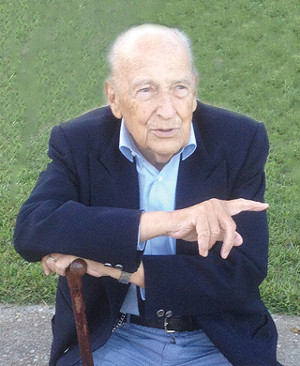 The Association of Architects of Catalonia dedicates a complete exhibition to the architect, engineer and businessman Josep Maria Bosch Aymerich on the second anniversary of his death. Aymerich was a full academician of the Royal European Academy of Doctors-Barcelona 1914 (RAED), where he always maintained a very active role. The exhibition, curated by the architect and a prominent member of the Association Roger Subirà, traces a complete tour of the life and work of a pioneer of Catalan and Spanish architecture of the 20th century, with plans, scale models and audiovisual documents of his main projects, including the iconic skyscraper of the Catalunya square in Barcelona, that was never built.
The Association of Architects of Catalonia dedicates a complete exhibition to the architect, engineer and businessman Josep Maria Bosch Aymerich on the second anniversary of his death. Aymerich was a full academician of the Royal European Academy of Doctors-Barcelona 1914 (RAED), where he always maintained a very active role. The exhibition, curated by the architect and a prominent member of the Association Roger Subirà, traces a complete tour of the life and work of a pioneer of Catalan and Spanish architecture of the 20th century, with plans, scale models and audiovisual documents of his main projects, including the iconic skyscraper of the Catalunya square in Barcelona, that was never built.

Dr. Josep Maria Bosch Aymerich
“The figure of Josep Maria Bosch Aymerich (1917-2016), for his extensive training and professional career, transcends the world of architecture for standing out in the world of business and engineering, his work is of enormous magnitude, with more than 500 entries. Most of his work is in Spain, but he built in more than fifteen countries such as Saudi Arabia, Ecuador, Algeria, Dubai and Nigeria, and his companies designed, built or promoted more than 5,000 homes”, explains Subirà in his introduction to the exhibition, which will be on display until December 7th in Altell and Espai Picasso of the Architects’ Association in Barcelona.
The exhibition is the result of the donation of part of its vast fund to the Historical Archive of the Association by the Private Foundation Bosch Aymerich, manager of his legacy. Corporate buildings, tourist complexes, ports, airports, hospitals, housing developments, military bases, highway networks, among others, make up a professional curriculum that has more than 500 works screened in more than fifteen countries.
The exhibition is divided into four parts (“Large customers”, “Corporate landscapes”, “Leisure and tourism” and “Social services”) and presents a selection of twenty-two projects such as the aforementioned skyscraper in Catalunya square, Hotel Cap sa Sal in Begur, the Toblerone building in Almería or the Banca Madrid building in the Castellana promenade in Madrid. The objective is to rediscover and situate his figure and his work in the set of 20th century architecture in Spain.

